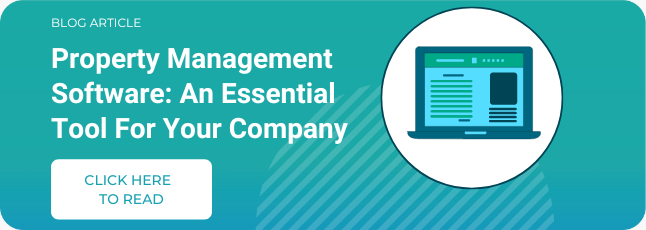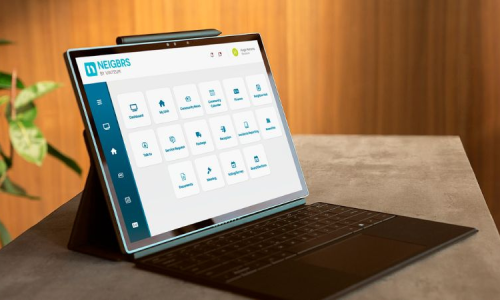Community associations face all kinds of issues. As an HOA manager, you often need to address different concerns and conflicts. This is why it is essential to learn how to handle and solve problems effectively. Most importantly, HOA managers are often on the go, with little time available. Developing your problem-solving skill helps you find quick solutions. This will save you time, and it will also create a better work atmosphere for everyone involved.
Discover how to easily implement a problem-solving mindset in your company and communities with our 5-steps process.
1. Understand the common cause issues an HOA manager faces
If you don’t know the cause of a problem, chances are you won’t find a long-term solution for it. This often happens in community associations. Board members or HOA managers try to quickly fix issues on the surface without tackling the actual cause. Then, the same problems keep manifesting themselves in different forms. So the first step should always be to understand the roots of an issue.
“If I had an hour to solve a problem I’d spend 55 minutes thinking about the problem and 5 minutes thinking about solutions.”
Albert Einstein
Being aware of the cause of typical HOA issues is helpful for an HOA manager. It allows you to understand complex situations better so you can take steps to avoid them in the future.
For example, HOAs often complain about the lack of responsiveness of their management company. In this case, an HOA manager may try to solve this issue by being more reachable. However, board members and residents want more than just to receive quick answers. They want to be informed. So the cause of the issue here is actually deeper than a manager who is available 24/7. It has to do with an inability to communicate effectively. The HOA manager then needs to implement a different communication strategy. One that allows residents to be fully informed and removes the pressure off of managers.
One way to solve this problem could be to use several HOA communication tools. Some software allows you to send the same information through different channels to ensure everyone gets the message. You can also easily set up and update website pages where you can include a section for Frequently Asked Questions (FAQs). These tools are built to save HOA managers time and improve communication practices. Learn more about them in the video below.
2. Hold a brainstorming session to get different perspectives
As an HOA manager, you should know that your job is not to solve a problem independently. It would be best to involve your colleagues and your clients in the process. Their perspectives will help you see the bigger picture and find more appropriate solutions.
It will also help you understand how the different parties feel about a particular problem. Knowing how they feel will help you assess the gravity of an issue.
Your role as an HOA manager is to guide the discussions during the brainstorming session. You can divide this process into four steps:
- Present the problem
- Describe feelings about the problem
- Share solution ideas
- Evaluate and develop the best ideas
During these meetings, you need to make sure no one attacks someone else’s idea It should be a safe, productive environment for everyone to share their opinions. You are not there to discuss whose fault the problem is but instead how to solve it collectively. Encourage the team to develop their ideas and involve even the quietest people in the room. It is essential to understand how the problem affects each individual, including yourself.
3. Pick and implement your solution
Once you have gathered enough ideas during the meeting, you can weigh the pros and cons and decide which solution you can apply.
You should choose a realistic solution that you feel comfortable implementing. It should also be affordable to your company and communities.
Introducing a solution requires planning and monitoring. You need to set a specific goal and a timeframe.
Implementing something new should be done carefully. You need to do some tests and gather feedback.
When you solve the root of a problem, something will often change. In general, people have strong feelings towards change. An HOA manager must support their team members during this time.
The change curve below describes feelings individuals experience when facing change and how to support them.
4. Evaluate the outcomes
To measure your solution’s effectiveness, you need to evaluate the outcomes. That is why it is essential to set specific and measurable goals beforehand.
Here are a few examples of specific and measurable goals:
Here is what you can also ask yourself:
- Next month, I will research the 3 top HOA communication apps and present them to my team members.
- I will host an HOA meeting with each community every quarter to review important topics.
- Every two months, our management company will host brainstorming sessions to foster our problem-solving skills and share best practices.
- Did the solution work as expected?
- What did go well? What didn’t go well?
- Can this solution solve other problems we face?
- Is this solution viable in the long term?
- Does this solution require too much effort in the long run?
You can also ask your colleagues and the HOA’s residents these same questions. The best way to do so is by conducting an HOA survey. You can also make it anonymous to ensure the feedback are honest.
If the answers are mainly positive, then you successfully solved the problem. This doesn’t mean you don’t have to check regularly. Nothing is permanent, situations change, and you might have to re-think your strategies.
If the answers are mainly negative, you should go back to step 1 or 2 and redo the process. You can also try out another solution from the list you created in step 2. In any case, make sure to be transparent about it and communicate it with your team.
5. Use emotional intelligence to solve problems and manage stress
Emotions affect our thoughts, behavior, and social relations. So, it is essential to recognize, understand, and manage these feelings.
Emotional intelligence consists in recognizing and handling your emotions and those of others. Here is a framework of five elements that define the concept of emotional intelligence.
It is natural to feel overwhelmed, frustrated, or even scared when issues arise. Facing adversity in the workplace can put a lot of stress and pressure on community association managers.
Applying these five principles in your life will help you deal with problems compassionately. This can minimize the conflicts you may have with others. But, it can also reduce the stress and anxiety that a hostile environment can create.
It will help if you prioritize your mental health. When facing obstacles, make sure to take a step back first. Take some time to process the situation and understand how it affects you.
Practicing meditation, yoga, or listening to music can relieve some stress. A relaxed and clear mind will fix problems with less effort.
Final points
As an HOA manager, you will face many setbacks. Indeed, problems and conflicts are common in human relations. Since your role involves dealing with different people, you need to find creative ways to meet these challenges.
To do so, make sure to involve all parties in the process. Also, remember to develop your emotional intelligence whenever you can. Fostering a hostile-free environment is essential for your well-being and the others’.
Last but not least, look for best practices, ask your peers, and do some networking. Other professionals probably go through the same difficulties. Learning from them can help you apply solutions you had not thought of.





